
My name is Amanda Nichole Croteau, and I am a Cherokee Nation tribal citizen and marine scientist living in Sacramento, California. Despite growing up in the city, I fell in love with marine science through an undergraduate oceanography class at California State University (CSU), Sacramento. I’ve since committed myself to be as involved in the ocean as possible. Through this article, I share my journey as an Indigenous scientist and the experiences that have shaped who I am today and my goals as a NOAA Dr. Nancy Foster Scholar: sharing my love for ocean sciences with the community while studying coral geochemistry. I would not be here today without the love and sacrifice of my family.

July 15-23 marks Latino Conservation Week! Started in 2014, Latino Conservation Week is an initiative of the Hispanic Access Foundation to support the Latinx community getting outdoors and participating in activities that protect our natural resources.

In June 2023, a group of NOAA Dr. Nancy Foster Scholars traveled for a science communication and training retreat to American Samoa, the only U.S. territory south of the equator and home to National Marine Sanctuary of American Samoa. The group of 21 scholars included the seven new scholars for 2023 and scholars from previous cohorts. They were joined by a team from NOAA’s Office of National Marine Sanctuaries, including Deputy Director Monique Baskin, Pacific Regional Director Kristina Kekuewa, Chief of Science Division Dr. Steve Gittings, Chief of Communications and Engagement Kate Thompson, National Education Liaison and Volunteer Coordinator Claire Fackler, Regional Education Coordinator Seaberry Nachbar, and Videographer Nick Zachar.

Jaida Elcock is a doctoral student in the MIT-WHOI Joint Program. Her research focuses on the movement ecology of basking sharks. In 2022, Jaida was awarded a Dr. Nancy Foster Scholarship to support her doctoral research. Jaida received her bachelor’s degree in biology with university honors from Northern Arizona University in Flagstaff, Arizona. She has previously lived in landlocked states but has still been able to gain experience with marine animals through an internship at OdySea Aquarium in Scottsdale, Arizona, an REU internship at Friday Harbor Labs in Friday Harbor, Washington, and a lab technician position at Howard University in Washington, D.C. Jaida is an active science communicator on many platforms, including social media. Jaida is incredibly excited to help other underrepresented students light a fire within themselves to fuel a passion for marine sciences.
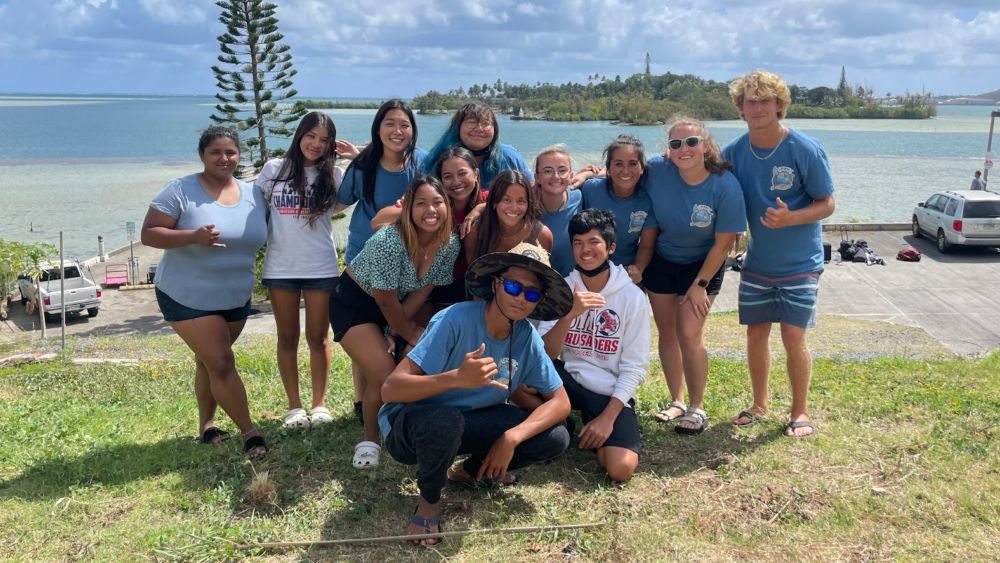
Oʻahu high school students spent the week on Moku o Loʻe (Coconut Island) learning about marine mammal science at a University of Hawaiʻi at Mānoa summer program. Developed by Hawaiʻi Institute of Marine Biology PhD students Kirby Parnell and Brijonnay Madrigal, the Summer Marine Mammal Intensive Learning Experience (SMMILE) program is a fully funded overnight learning experience. “As an underrepresented minority student myself, I know the importance of introducing students to marine mammal science and marine science at an early age to inspire them to potentially pursue the field in the future,” said Madrigal. Watch this TV news coverage of the SMMILE program.
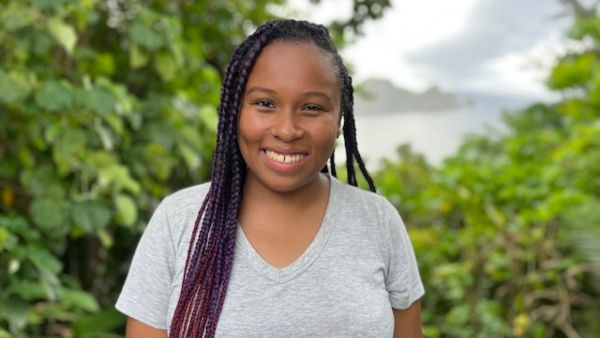
To support dissertation research on the effects of microplastics on coral reef health and resilience, a doctoral student in the University of Hawaiʻi at Mānoa Marine Biology Graduate Program has been awarded a highly competitive NOAA Nancy Foster Scholarship. Keiko Wilkins’ work will help to establish a baseline of current conditions of microplastic ingestion by corals within the three NOAA national marine protected areas within the Pacific Island region: Papahāumokuākea Marine National Monument, Hawaiian Islands Humpback Whale National Marine Sanctuary and the National Marine Sanctuary of American Sāmoa.
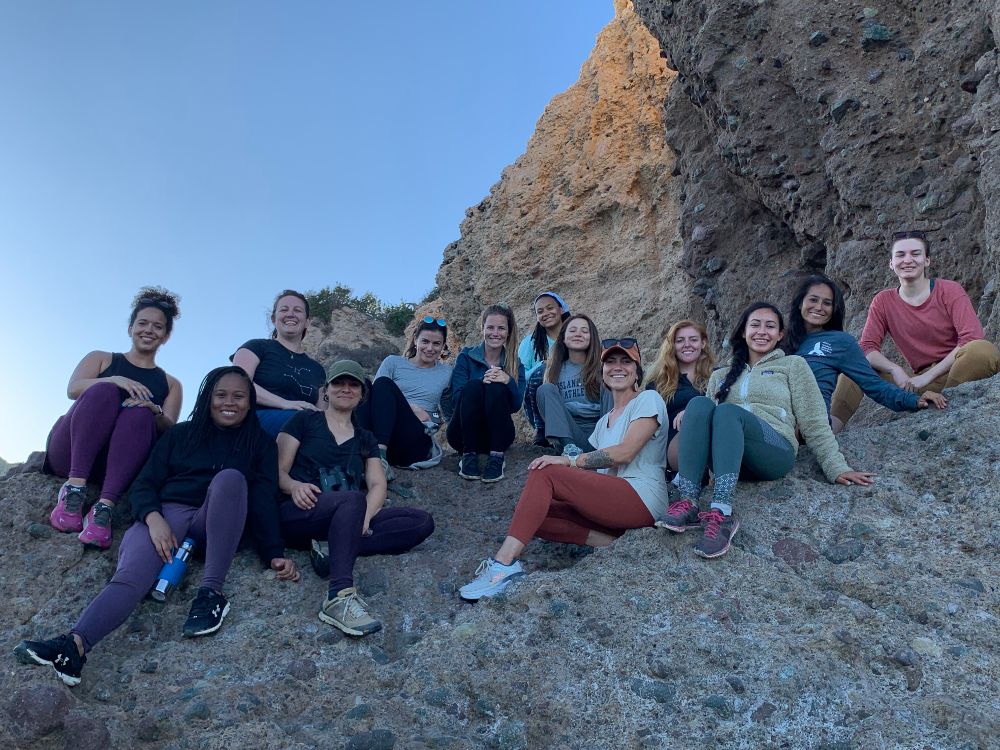
The stewardship of our spectacular ocean is informed by brilliant scientists, researchers, and budding scholars. NOAA’s Dr. Nancy Foster scholars represent a new generation that works to find solutions to the complex obstacles faced in marine management. Marine research equips policy planners with the information they need to make informed decisions to protect our nation’s most treasured wildlife, maritime heritage, seascapes, and cultural resources.

Over 30 years ago, my father immigrated to the U.S. from Mexico seeking a better life. He began as a migrant worker, and was later granted amnesty in 1986. He is one of the hardest workers I have ever met. He never went to college, but understands the importance of education. I was the first person in my family to graduate with a bachelor’s degree, master’s degree, and subsequently will be the first in my family to earn a doctoral degree. As I have continued in higher education, I found that among my peers and colleagues there are less and less people of color and people that look like me. Hispanics are underrepresented in STEM (science, technology, engineering, and math) fields and the percentage of Hispanic women in higher education is extremely low.

NOAA's Office of National Marine Sanctuaries has selected seven graduate students as recipients of the Dr. Nancy Foster Scholarship, representing graduate-level areas of study such as marine biology, oceanography, and ecology. The scholarship recognizes outstanding academic achievement and encourages independent graduate level research.

Superheroes are all around us, but they aren't wearing capes or running at super speed. Instead, they're passionate kids, using their voices and demanding to be heard, especially when it comes to sparking environmental change. This Clean Beaches Week (July 1-7), we're sharing examples of how kids are making a difference in their communities (and beyond) as evidenced through research by Dr. Nancy Foster Scholar, Jenna Hartley.

Imagine life in the deep, dark ocean where you cannot easily see or smell, but need to find food and companionship, and navigate from place to place while avoiding predators. Your eyes and nose would not be much help; instead, you would need to rely on sound to make sense of your environment.

Twenty years ago, NOAA created the Dr. Nancy Foster Scholarship Program in honor of the late Dr. Nancy Foster. This scholarship provides support for independent graduate-level studies in oceanography, marine biology, or maritime archaeology disciplines, including all science, engineering, social science, and resource management of ocean and coastal areas. Based on language within the National Marine Sanctuaries Act. To date, scholarship selections have been based on academic excellence, letters of recommendation, research and career goals, and financial need.
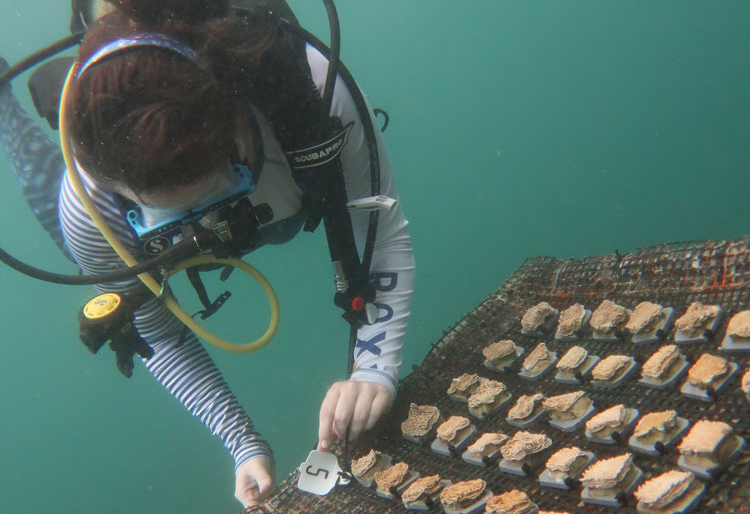
Is 80ºF hot? If you live in the southeast, 80ºF can be a pitstop to even warmer days. But in the temperate Pacific Northwest, that same temperature can be scorching. Like people, different coral reefs can have dramatically different tolerances to warmer ocean temperatures. In Florida Keys National Marine Sanctuary, researchers have noticed that when ocean temperature rises—even by 1 or 2 degrees—some reefs struggle while others are resilient. Why are certain reefs in the same region doing better than others?
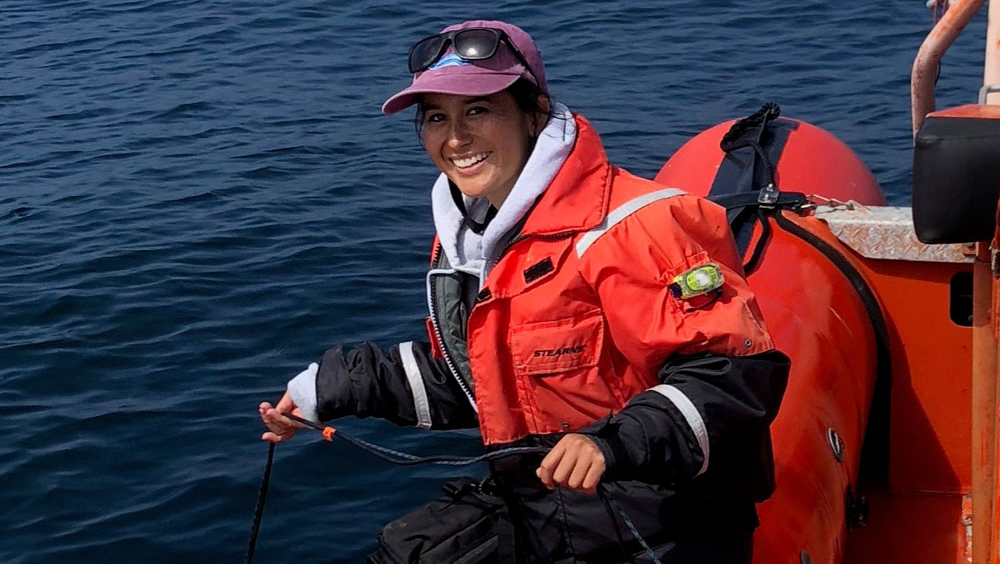
NOAA's Office of National Marine Sanctuaries has selected three graduate students as recipients of the Dr. Nancy Foster Scholarship, representing graduate-level areas of study such as marine biology, oceanography and maritime archaeology. The scholarship recognizes outstanding scholarship and encourages independent graduate level research.

A coral reef is part of a delicate balancing act. When stony corals dominate the ocean floor, they form vibrant reefs that are home to marine life. Besides being hotspots teeming with life, reefs can protect shorelines from storms by absorbing coastal swell and storm surge. But corals are also constantly competing with algae for space. If algae out-compete the corals, once-productive coral reefs can become covered by algae, forming deserted areas called algal barrens. When this happens, the natural reef barrier breaks down, leaving our coastlines vulnerable to flooding and property damage. When coral reefs are damaged and overrun by algae, how can the scale be tipped back towards healthy coral reefs?

The ocean teems with intriguing sounds. Beneath the crashing waves, a sea bass bleats. Snapping shrimp provide a delicate, rhythmic background for charismatic humpback whale calls that boom through the water. Humans also make sounds that add to the mix: for example, as cargo ships deliver necessary goods between ports, they add their own low pitch track. All these sounds coexist: how do we ensure they are a symphony and not a cacophony?
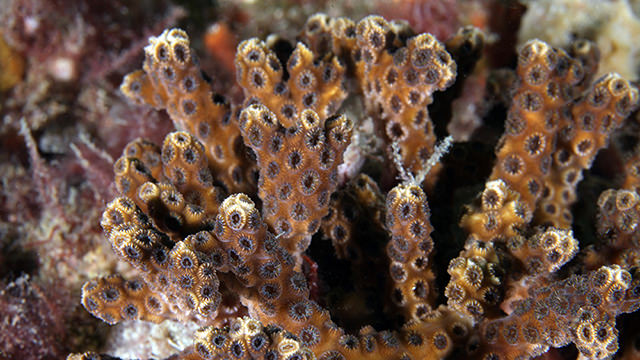
Diving at Gray's Reef National Marine Sanctuary, one thing is obvious: it's a hidden treasure. A patchwork of Oculina corals alternates with colonized rock to form the sanctuary's hard bottom reef. Multitudes of marine organisms — from small zooplankton and jellies to larger predators like fish and sharks — inhabit the reef.

Kids these days show us they can do anything. From organizing rallies to encouraging people and businesses to make sustainable choices, Generation Z doesn't back down from environmental challenges. So it's only fitting that Jenna Hartley is working with Generation Z students and their teachers to see how young people can make waves teaching their communities about marine debris.

It's a bright, sunny day in Florida Keys National Marine Sanctuary — perfect for a fishing trip. As you sit on your boat, enjoying the slight rocking from the waves, you feel a tug on your line. You wrestle with an Atlantic tarpon, a large, shiny silver fish that many anglers flock to this national marine sanctuary to catch. Just as you're about to bring the fish out of the water, a hammerhead shark swoops in and eats your prize. As you sit there mourning the loss of your tarpon, a little spark of optimism grows when you realize there is a scientist working on this exact issue. She is Dr. Nancy Foster Scholar Grace Casselberry, and she wants to prevent hammerhead sharks from eating your catch.
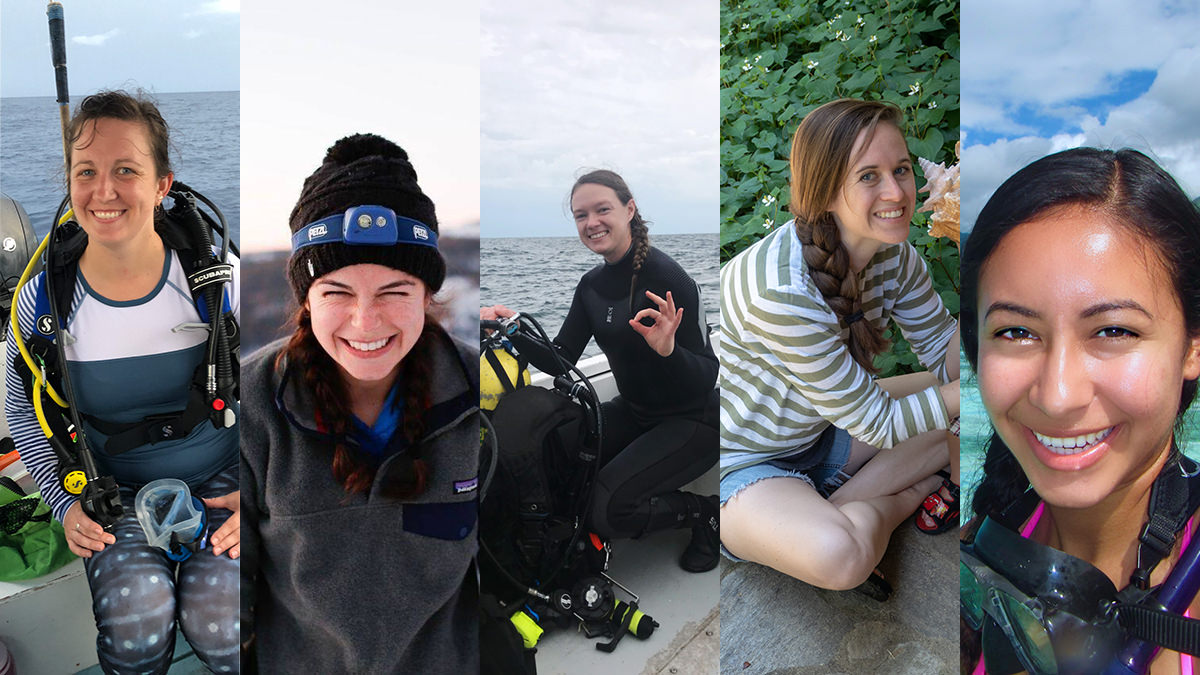
NOAA's Office of National Marine Sanctuaries has selected five graduate students as recipients of the Dr. Nancy Foster Scholarship, representing graduate-level areas of study such as marine biology, oceanography, and maritime archaeology. The scholarship recognizes outstanding scholarship and encourages independent graduate level research.

Deep-sea corals have some things in common with trees. As their branches grow, corals document the minute details of ocean chemistry in ring patterns like those in tree trunks. And like certain trees, some coral species can live for hundreds or even thousands of years, preserving their recording of past conditions. Dr. Nancy Foster Scholar Carina Fish uncovers the records kept by deep-sea corals in Cordell Bank National Marine Sanctuary for her Ph.D. at University of California, Davis.

Not every marine scientist has the same origin story. Some are instantly enthralled by the ocean and its many inhabitants at a ripe young age. For others, a lightbulb goes off while sitting in an undergraduate class. Dr. Nancy Foster Scholar Kate Hewett grew up on the islands of Micronesia, but did not consider a career in marine sciences until graduate school. While working as an environmental engineer in Boston, Massachusetts, she decided to go back to school to develop a deeper understanding of the environmental problems she encountered at work. In her classes, the complicated physics associated with coastal zones pulled at Hewett's engineering heartstrings.
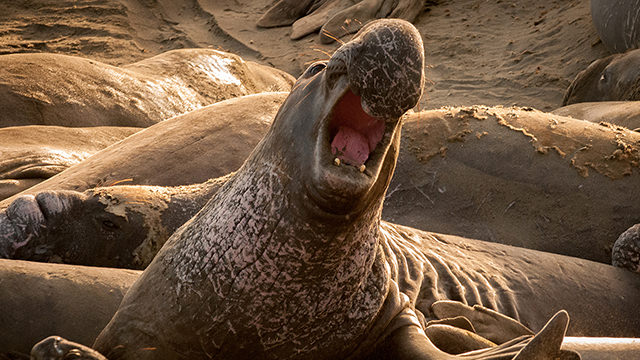
It was almost an ordinary day in the field for Dr. Nancy Foster Scholar Sarah Kienle - except for the Jeff Corwin show camera crew. She was helping the crew with a routine procedure on an adult female northern elephant seal in Año Nuevo State Reserve, using a pulley attached to a sling and a tripod system to lift the seal so the team could weigh her.
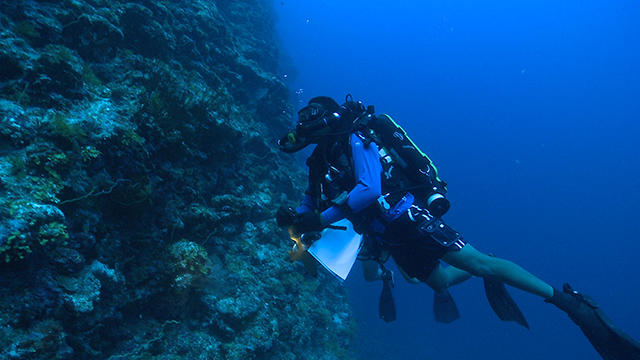
Many Native Hawaiian fishers will tell you the same thing: there are not plenty of fish in the sea. In their childhood, they would throw nets into the ocean and catch numerous large fish. Today, when they bring their children to their traditional fishing grounds, their nets often come up empty. Where did the fish go?
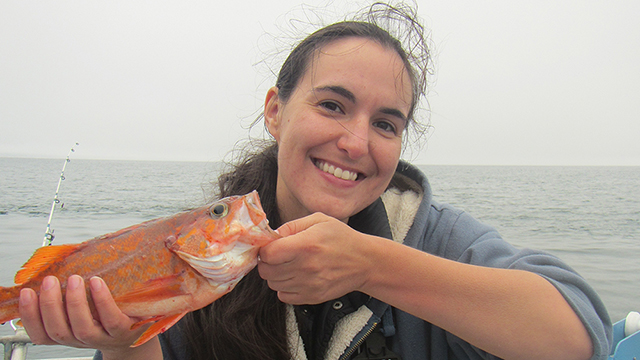
You may not know it when you dive into a sanctuary, but there are baby fish everywhere. Newly-hatched fish, or larvae, are microscopic and at the whim of ocean currents. It's possible that via these currents, larvae populations throughout different parts of the ocean could be connected. But are these currents strong enough to connect populations of fish hundreds of miles away - like those in Oregon and Olympic Coast National Marine Sanctuary in Washington? Dr. Nancy Foster Scholar and Oregon State University Ph.D. candidate Alexandra Avila wants to find out.

Swimming through hazy, green waters in the Gulf of Mexico in 2016, divers knew something was off at Flower Garden Banks National Marine Sanctuary. That's when they noticed the vast quantities of dead marine organisms around them, and curious white mats covering the corals. One area of this pristine sanctuary was no longer teeming with life. When marine organisms die suddenly and no one knows why, that's when you need a dedicated group of scientists for a special episode of Coral CSI.
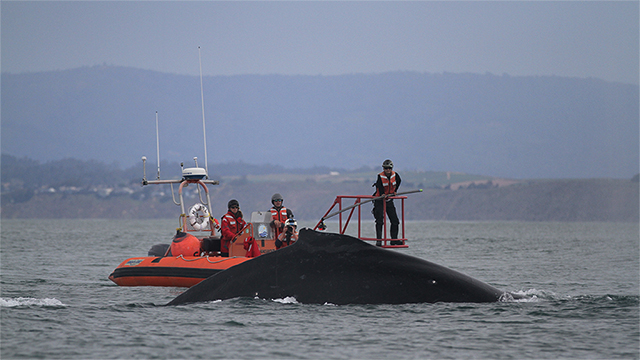
Dr. Nancy Foster Scholar Angela Szesciorka's research sounds simple enough. For her Ph.D. at Scripps Institution of Oceanography at the University of California, San Diego, she studies the impact of shipping on blue, humpback, and fin whales throughout the four national marine sanctuaries off of California – Channel Islands, Monterey Bay, Greater Farallones, and Cordell Bank. She figures out where the ships go, then figures out where the whales go, and sees how they intersect.
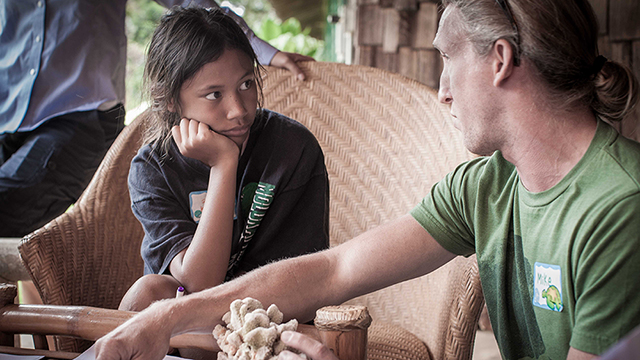
When faced with a devastating flu season, we humans look to public health specialists. When exposed to changes in their environment, corals can get sick too. When corals are not healthy at Hawaiian Islands Humpback National Marine Sanctuary and Pacific Remote Islands National Marine Monument, Michael Fox is on the case.
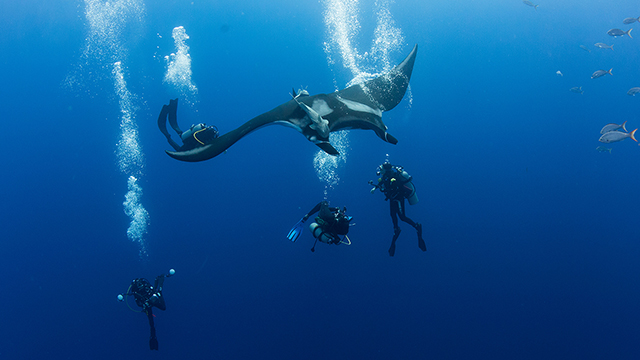
This is how Dr. Nancy Foster Scholar Joshua Stewart describes his first time seeing the subject of his dissertation work, a manta ray. Diving near a shipwreck in the Dominican Republic, he was caught off guard when a manta ray shot up towards the surface. Stewart turned his video camera to the creature, and it mocked him with a belly flash and swam off. Stewart checked his camera. It wasn't recording, and no one believed his story. But that experience kicked off his interest in this playful gentle giant, and inspired his research in Flower Garden Banks National Marine Sanctuary.
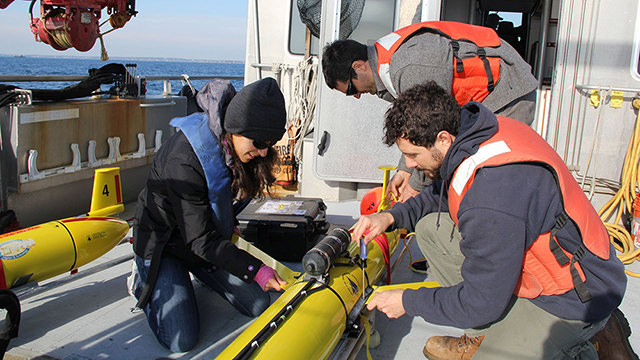
It was the first time anyone had tried listening for dolphins in Massachusetts Bay. Tammy Silva scrolled through sound recordings and spectrograms for months, seeing nothing. Then, she found it. The right kind of squiggly lines and corresponding whistles. She heard dolphins.
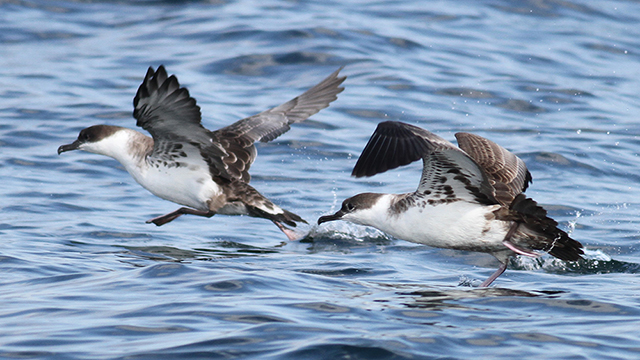
Bird vomit is important for Anna Robuck. After a lot of practice as a wildlife rehabilitator, Robuck is now able to deftly flush the stomach contents from a bird. The bird beats a hasty retreat away unscathed, and Robuck is left with a treasure trove of diet information.
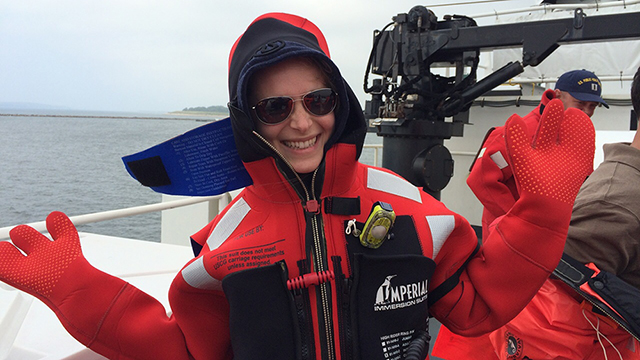
The sounds of the ocean are an odd combination of haunting and soothing. From the crash of waves on the beach to the echo of whale songs, it's tempting to believe putting a shell up to your ear will allow you to access the underwater soundscape whenever you need an escape. Unfortunately it doesn't work that way. But Samara Haver has the next best thing: underwater sound recordings of national marine sanctuaries and national parks.
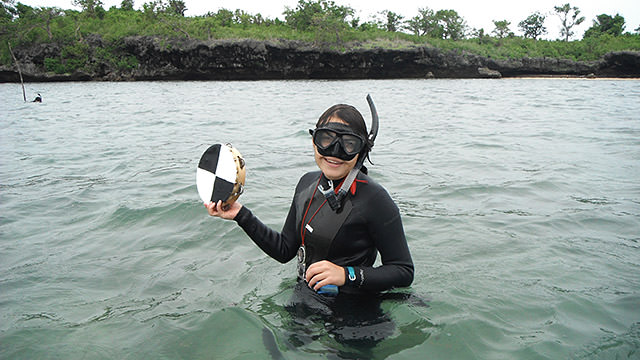
Dive under the waves, and you'll find vast communities of marine organisms. From busy kelp forests to vibrant coral reefs, marine communities rely on each other for food and shelter. Communities and support networks are equally important for graduate students, albeit more difficult to establish at first. The Dr. Nancy Foster Scholarship Program provides just that: a tight-knit community of peers and mentors. It's this sense of togetherness that brought Nissa Kreidler to the Dr. Nancy Foster Scholarship Program.
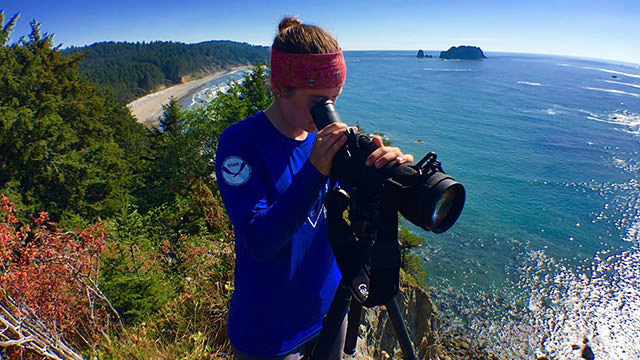
The northern sea otter is the furry ambassador of Olympic Coast National Marine Sanctuary. With their knack for naps and holding hands as they float, their cute faces are pervasive both along the coast and on social media. But it wasn't always so this way.

Here's a conundrum: you have one summer to study intertidal organisms in 12 sites up and down the West Coast. How do you do it?
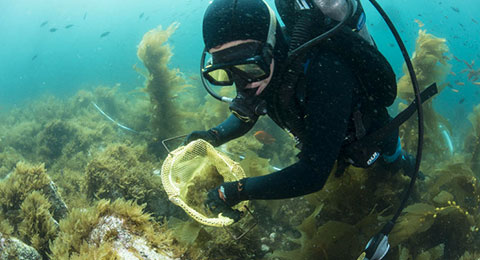
The kelp forests of Channel Islands National Marine Sanctuary provide shelter and food for hundreds of species of animals and plants, from abalone to sea lions. So how does an invasive seaweed impact this important ecosystem?